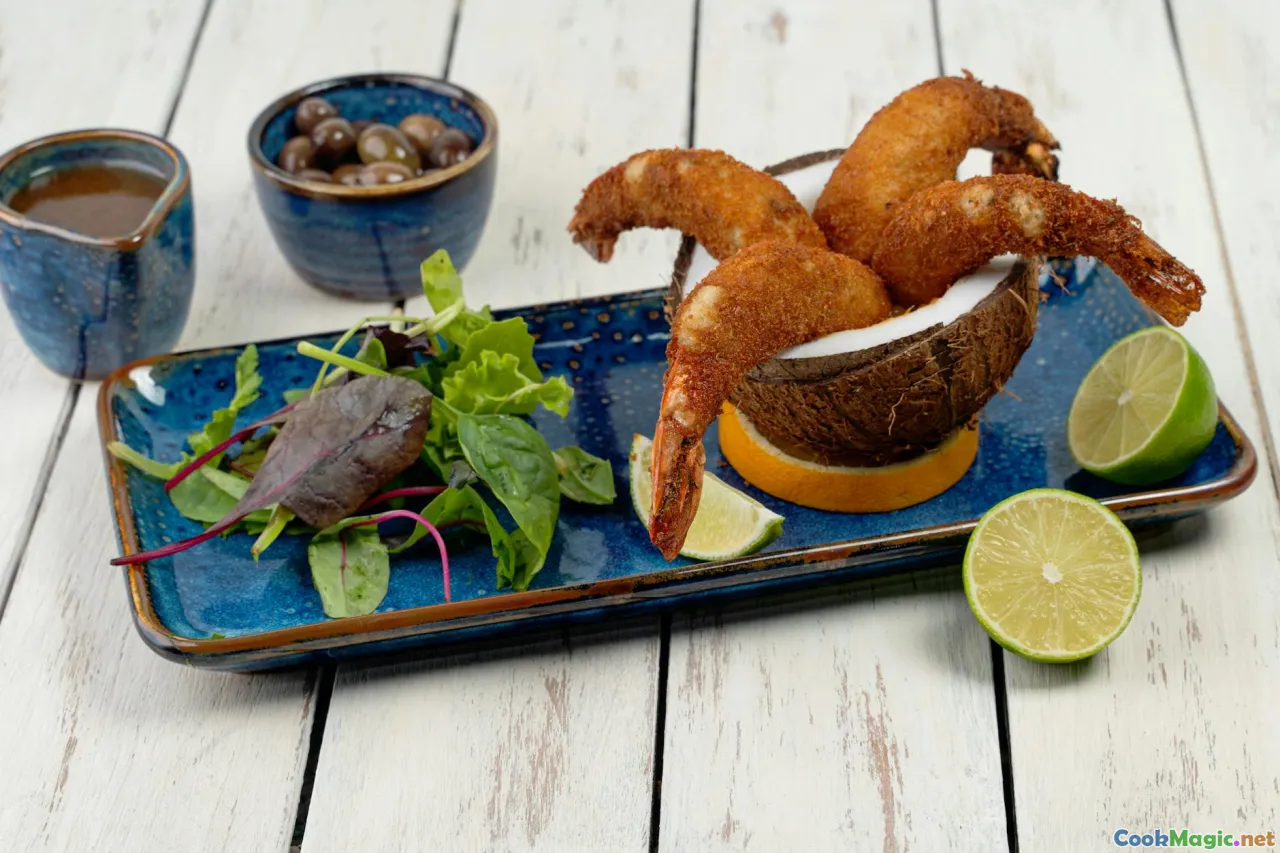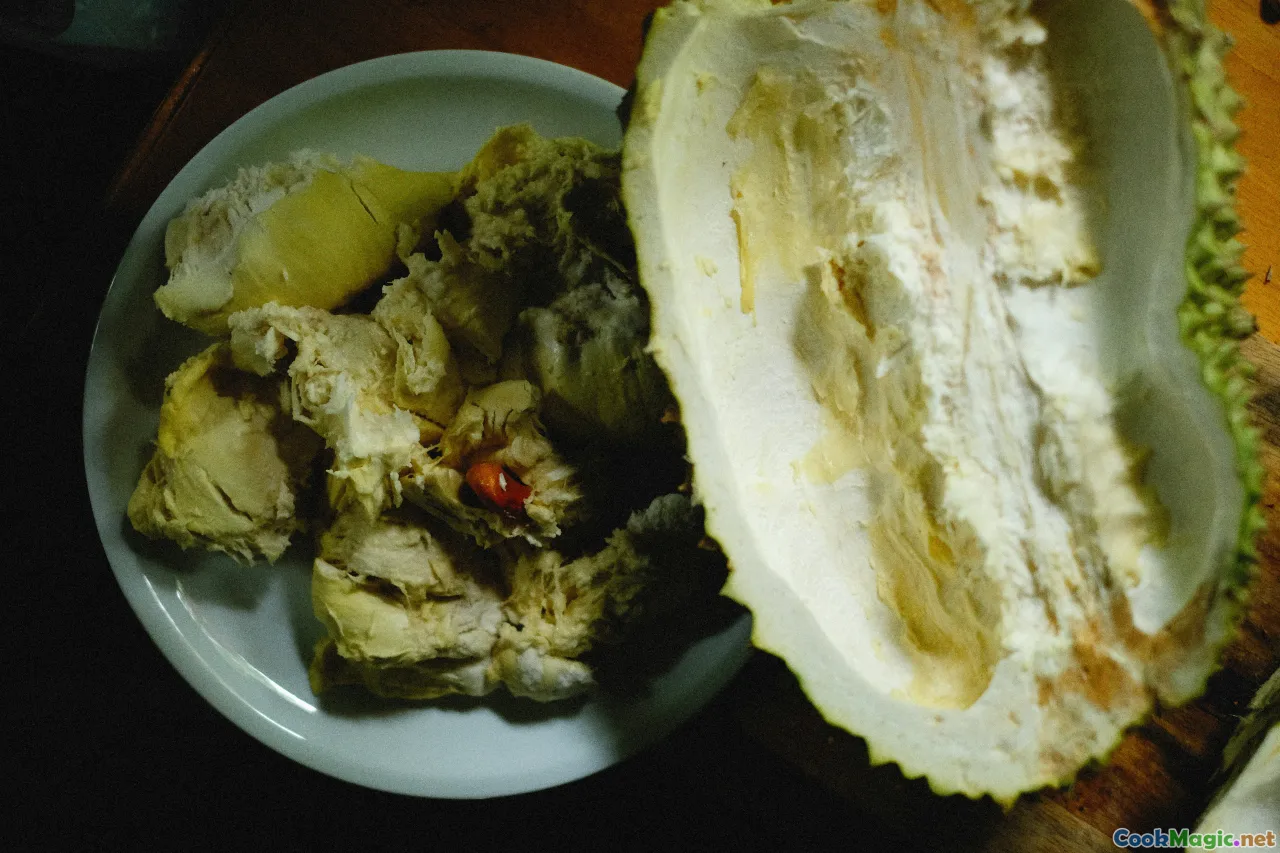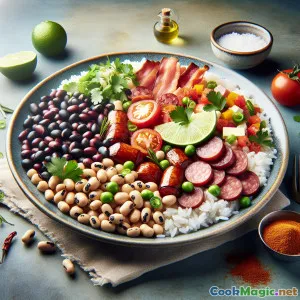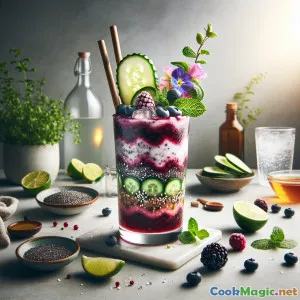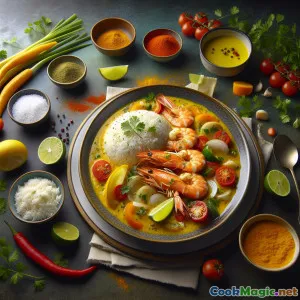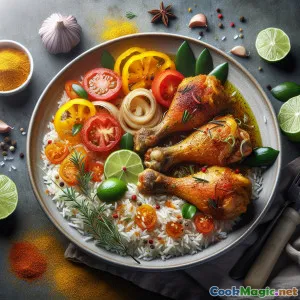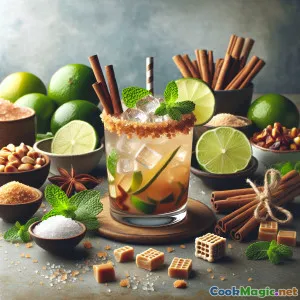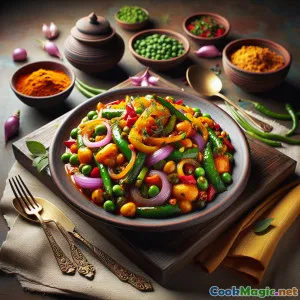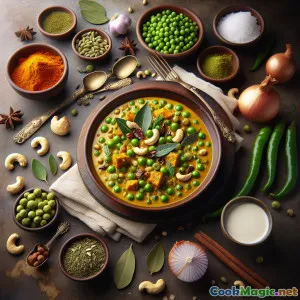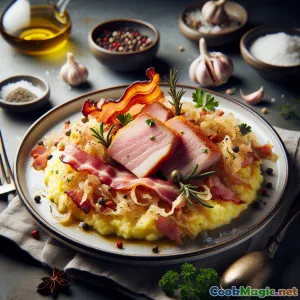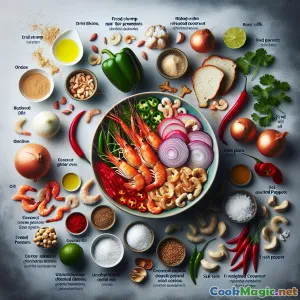
Vatapá của Orixás: Bữa Tiệc Kem của Bahia
(Vatapá dos Orixás: Bahia’s Creamy Celebration)
(0 Đánh giá)0
2,911
tháng 8 17, 2025
Báo cáo sự cố
Nguyên liệu
-
80 grams Tôm khô
(Soaked in warm water for 10 min, rinsed)
-
200 grams Tôm tươi hổ còn sống
(Bóc vỏ và làm sạch)
-
200 grams Bánh mì trắng cũ
(Crusts removed, cut into cubes)
-
400 ml Sữa dừa
(Full-fat recommended)
-
60 grams Đậu phộng rang
(Unsalted, finely ground)
-
50 grams Dừa dã nạo không đường
-
1 tbsp Dende oil (dầu cọ đỏ)
(For authentic flavor, more for drizzling)
-
2 tbsp Dầu thực vật
-
1 medium Hành tây
(Thái nhỏ)
-
3 large Tỏi
(Nghiền nát)
-
20 grams Gừng tươi
(Peeled, finely grated)
-
1 medium Ớt chuông đỏ
(Băm)
-
1 small Ớt xanh
(De-seeded, finely chopped (or adjust to taste))
-
400 ml Nước dùng cá
(Tự làm hoặc ít natri)
-
1/2 bunch Ngò rí tươi
(Thái nhỏ)
Muối, to taste
Hạt tiêu đen, to taste
Cắt lát chanh tươi, to serve
(Soaked in warm water for 10 min, rinsed)
(Bóc vỏ và làm sạch)
(Crusts removed, cut into cubes)
(Full-fat recommended)
(Unsalted, finely ground)
(For authentic flavor, more for drizzling)
(Thái nhỏ)
(Nghiền nát)
(Peeled, finely grated)
(Băm)
(De-seeded, finely chopped (or adjust to taste))
(Tự làm hoặc ít natri)
(Thái nhỏ)
Dinh dưỡng
- Khẩu phần: 4
- Kích thước khẩu phần: 1 bowl (about 300g)
- Calories: 520 kcal
- Carbohydrates: 60 g
- Protein: 28 g
- Fat: 22 g
- Fiber: 6 g
- Sugar: 6 g
- Sodium: 940 mg
- Cholesterol: 115 mg
- Calcium: 140 mg
- Iron: 3.7 mg
Hướng dẫn
-
1 - Soften Bread:
Place bread cubes in a bowl, pour coconut milk over and soak until soft. Mash gently with a fork.
-
2 - Prepare seafood:
Soak dried shrimp in warm water 10 min, drain. Peel and devein tiger prawns. Rinse and set both aside.
-
3 - Cook Aromatics:
Heat both oils in a large pan. Sauté onion, garlic, ginger, bell pepper and chili (if using) for 7 minutes, until soft.
-
4 - Blend Base:
In blender, combine softened bread mixture, cooked aromatics, roasted peanuts, and desiccated coconut. Blend until smooth.
-
5 - Simmer Vatapá:
Return purée to pan. Pour in fish stock gently, whisking constantly over medium-low heat. Stir in dried shrimp.
-
6 - Finish with Seafood:
Add tiger prawns, simmer until just cooked (about 4–5 min). Taste and season with salt & pepper.
-
7 - Garnish & Serve:
Ladle into bowls, swirl with extra dende oil, scatter coriander on top, and serve with lime wedges.
Place bread cubes in a bowl, pour coconut milk over and soak until soft. Mash gently with a fork.
Soak dried shrimp in warm water 10 min, drain. Peel and devein tiger prawns. Rinse and set both aside.
Heat both oils in a large pan. Sauté onion, garlic, ginger, bell pepper and chili (if using) for 7 minutes, until soft.
In blender, combine softened bread mixture, cooked aromatics, roasted peanuts, and desiccated coconut. Blend until smooth.
Return purée to pan. Pour in fish stock gently, whisking constantly over medium-low heat. Stir in dried shrimp.
Add tiger prawns, simmer until just cooked (about 4–5 min). Taste and season with salt & pepper.
Ladle into bowls, swirl with extra dende oil, scatter coriander on top, and serve with lime wedges.
Thông tin thêm về: Vatapá của Orixás: Bữa Tiệc Kem của Bahia
Vatapá dos Orixás — An Ode to Bahia’s Spiritual & Sensual Kitchen
Vatapá dos Orixás is a celebratory, creamy seafood and bread stew rooted in the lush, sun-soaked traditions of Bahia, Brazil. Found at the intersection of African, Indigenous, and Portuguese culinary heritages, vatapá is believed to have been brought to Brazil along with enslaved West Africans and evolved into the iconic, globally beloved comfort food that it is today.
Imbued with Soul and Ritual
This version is named "dos Orixás" in homage to the Orixás—Afro-Brazilian deities who preside over aspects of nature, life, and community in the Candomblé religion. Traditionally, vatapá is prepared during spiritual feasts and festivals that honor the Orixás, making it so much more than just a dish; it’s a sacred offering, a hymn on a plate, shimmering with coconut milk, dende oil, peanuts, and, most notably, the sea’s bounty.
How Vatapá Differs From Other Stews
Vatapá's unique richness comes from bread soaked in coconut milk, peanuts, and palm oil, lending it a smooth texture and astonishing depth. The combination of ground nuts and soft, stale bread acts as a thickening agent, which melds with coconut milk—a tribute to afro-diasporic lineages—creating an unctuous, soft blanket for the seafood.
What also sets the dish apart is the fleeting, chemical-bright aroma and sunset coloring of dende oil (red palm oil), imparting boldness and cultural attitude. Earthy dried shrimp, introduced in so many Bahian recipes, forms the dish's oceanic character; their pungency is mellowed by vivid bell peppers, assertive fresh ginger, and sharp chilies. Every spoonful marries the coastal flavors of Brazil with flavor-crafting origins reaching back to Africa.
Celebratory, Never Everyday
In Bahia, vatapá is festive food, often paired with acarajé (black-eyed pea fritters) or fluffy white rice, especially on Fridays and during time-honored street parties like the festa de Iemanjá—a celebration honoring the powerful sea goddess. Its flavor profile is intended to be bold enough to satisfy and comfort, yet delicate enough to feel almost—almost!—ethereal.
Tips and Unique Aspects
- Bread: Use day-old bread or even toasted bread for toasty complexities. Just avoid oily, rich breads like brioche.
- Nuts: Roasted peanuts add earthiness, but in northeast Brazil, cashews can be found as a lush alternative.
- Palm Oil: Dende oil is non-negotiable for authenticity, but can be harsh if overused, so drizzle judiciously.
- Seafood Variations: Vatapá can be wholly vegetarian, swapping fish stock for vegetable stock and omitting prawns—still delightfully creamy and nut-forward.
- Texture: It should be spoonable but not runny—you control this by adjusting fish stock and blending longer for silky smoothness.
- Serving: Garnish with extra coriander and always serve with acidity nearby (limes, or even pickled chilies) to brighten rich flavors.
Personal Reflections—A True Bridge to Another World
When I first tasted Vatapá dos Orixás on a starlit night in Salvador da Bahia, it felt like eating history married to harmony—food linking land, water, faith, and people. It’s ideal for those looking to voyage far from pedestrian seafood stews, toward something spiritual, festive, and richly layered.
Try this recipe as both a celebration and a meditation: invite friends, play some Candomblé percussion, and savor the dish in bites that transcend mere sustenance. It’s proof, bowl after bowl, that food can be a vibrant bridge between cultures and the mystical—one creamy, coconut-kissed spoonful at a time.

